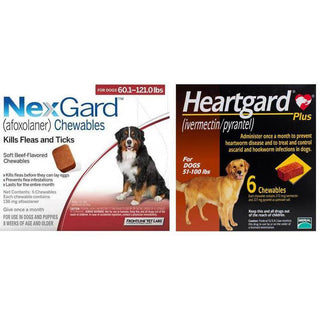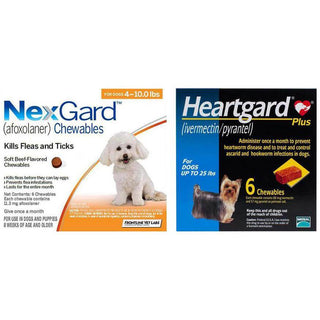Summer is the perfect time to hit the road with your furry companion. Whether you're heading to the beach, mountains, or visiting family, road trips can be a fun bonding experience. But for many dogs, car rides can cause motion sickness, turning an exciting journey into a stressful experience for both pet and parent.
In this guide, we’ll walk you through how to prevent motion sickness in dogs during summer road trips, ensuring a smooth, safe, and enjoyable adventure.
What Is Motion Sickness in Dogs?
Motion sickness in dogs happens when the movement during travel causes an imbalance between what their eyes see and what their inner ear senses. This condition is more common in puppies and younger dogs, as their inner ear structure is still developing, but it can affect adult dogs too.
Signs of Motion Sickness in Dogs:
- Excessive drooling
- Lip licking or yawning
- Whining or crying
- Inactivity or listlessness
- Vomiting
- Uneasiness or pacing
- Reluctance to get into the car
If your dog frequently shows these symptoms during car rides, motion sickness might be the reason.
Why Motion Sickness Is Worse in Summer
Summer heat can make motion sickness symptoms worse. High temperatures, poor ventilation, and dehydration can increase your dog’s discomfort. Additionally, long road trips during holidays or vacations may mean extended hours in the car, making it more difficult for dogs prone to travel sickness.
How to Prevent Motion Sickness in Dogs: Summer Travel Tips
1. Take Short Practice Trips
If your dog isn't used to car rides, gradually introduce them to the experience. Start with short drives around the block and slowly increase the duration. This helps your dog build tolerance and associate car rides with positive experiences.
2. Use a Proper Crate or Seatbelt Harness
A secure, well-ventilated crate or a seatbelt harness can help minimize movement and create a sense of security. Facing your dog forward (instead of allowing them to look out the side window) can reduce sensory conflict and nausea.
3. Avoid Feeding Right Before Travel
Don't feed your dog 2–4 hours before the trip. An empty or partially empty stomach can reduce the chances of vomiting. However, don’t restrict water—hydration is crucial, especially in summer.
4. Keep the Car Cool and Well-Ventilated
Use air conditioning or slightly open the windows to keep the car cool. Never leave your dog in a parked car, even for a few minutes, as the temperature can rise dangerously fast.
5. Use Calming Scents or Products
Pheromone sprays, lavender-scented wipes, or anxiety wraps can help calm nervous travelers. Familiar items like your dog’s blanket or favorite toy also help reduce stress.
6. Take Frequent Breaks
Plan to stop every 1–2 hours. Let your dog stretch, relieve themselves, and get some fresh air. Choose shady areas or rest stops with grass and avoid hot pavements that can burn their paws.
7. Provide Distractions
Chew toys or a frozen treat-filled Kong can keep your dog occupied. Just make sure it's safe to use while in motion.
8. Try Natural Remedies or Supplements
Some pet parents use ginger (in small, vet-approved doses) or calming treats made with chamomile, L-theanine, or CBD to ease motion sickness. Always consult your Veterinarian before giving any supplements.
9. Talk to Your Veterinarian About Medication
If natural methods don’t work, your vet may prescribe medications like Cerenia, a safe and effective treatment for dog motion sickness. Some dogs may also benefit from mild sedatives or antihistamines.
Summer Travel Safety Tips for Dogs
- Hydrate: Always carry a travel bowl and fresh water.
- Sun Protection: Dogs can get sunburned, too. Use a pet-friendly sunscreen on sensitive, exposed areas like your pet’s nose and ears when they’re spending time in the sun.
- Paw Care: Hot car floors or parking lots can burn your dog’s paw pads. Walk your dog in grassy or shaded areas.
- Watch for Heatstroke: Heavy panting, drooling, confusion, vomiting, or collapse may signal heatstroke—an emergency condition. Pull over immediately and get your dog to a vet.
Should You Let Your Dog Stick Their Head Out the Window?
It may look cute, but it’s not safe. High-speed wind can dry out their eyes, blow debris into them, or even cause ear injuries. Always prioritize your pet’s safety and comfort during the ride.
Final Thoughts: A Smooth Ride Makes for a Happy Trip
Motion sickness in dogs can make travel tough, but it’s manageable with the proper preparation and care. By taking steps to condition your dog, maintaining a cool and calm environment, and consulting your vet when necessary, you can make road trips enjoyable for both of you.
This summer, don’t let motion sickness spoil the adventure. Plan, drive safely, and enjoy the open road with your four-legged best friend!







